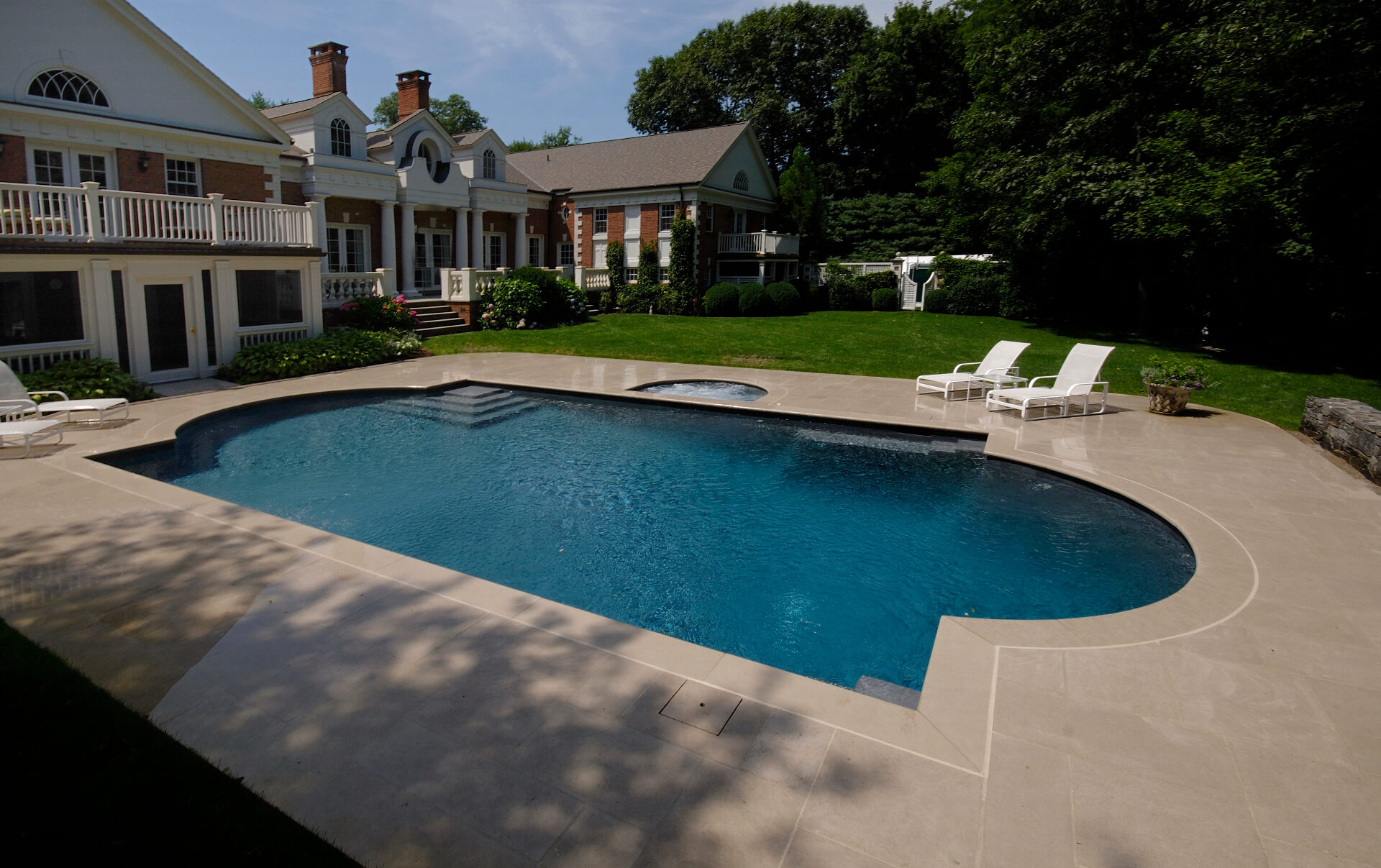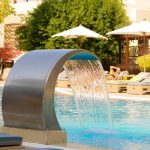How to Choose the Shape of Your Swimming Pool
There are many design elements to consider when creating your luxury swimming pool. Perhaps the most important aspect of pool design is selecting the shape. Before you begin, it is important to first consider determining factors such as price, size, space available, who will be using the swimming pool and for what activities as well as the depth and shallowness of your swimming pool.
Today, swimming pools come in a wide variety of incredible shapes and sizes that you may have never imagined. Whether you choose to create a custom design or select a standard shape, the experts at Shoreline Pools can best help you understand the pros and cons of each shaped pool to ensure you make the best decision when installing your luxury swimming pool.
Kidney Shaped Swimming Pools
A once popular swimming pool for modern homes in the 1950’s and 1960’s; the kidney shaped pool is perfect for creating a curved pool on a budget. The shape resembles a curved bowl with a medium size indent on one side of the pool. Measurements of a kidney shaped swimming pool are approximately 40 feet in length and 30 feet width. This design creates more square-footage yet less perimeter footage, which typically is more inexpensive to install.
With its highly versatile shape, many homeowners opt for a kidney-shaped pool. Pool owners can easily add on features at the indentation point, such as a pool bench or sun shelf to hug the outside perimeter.
Rectangle Shaped Swimming Pools
Rectangle shaped swimming pools feature clean-cut 90-degree corners providing a modern design for your backyard. This familiar shape is perfect for water aerobics and avid swimmers. Depending on design preference pool owners can choose to keep the hard edges or rounding off the corners, thus softening the appearance. Rectangle swimming pools fit most backyards. Typical dimensions for a narrow pool are 8 by 10 feet; meanwhile, a larger rectangle swimming pool is approximately 30 by 35 feet.
Rectangle-shaped swimming pools are a common design. Thus, finding an appropriately sized pool cover is easy, compared to more complex pool designs. Pool owners should keep in mind that rectangle shaped swimming pools generally are more expensive than the other types of curved shaped swimming pools. This is due in part to the wide perimeter footage. Furthermore, narrow sized rectangle swimming pools have more hard to reach nooks and crannies, making pool maintenance cleaning more challenging.
L-Shaped and Lazy-L Shaped Pools
The L-shaped swimming pool is an excellent choice to encompass all types of swimming activities. Whether your plan to use your pool to swim laps, dive or for children to play, L-shaped pools are ideal for all ages and stages.
The smaller area of the pool, known as the foot, extends from the main section. A spinoff of the L-shaped swimming pool, the Lazy-L shaped swimming pool resembles a rectangle shape with a space for both lap swimming and pool entry steps to the side. This unique design allows for lap swimmers and those relaxing simultaneously, without crossing swim paths.
Both of these swimming pool shapes will delight swimmers of all ages, as the foot area allows young children to wade in the shallow area, while avid lap swimmers can enjoy the deeper end. The shapes of both L-shaped and Lazy-L swimming pools easily adhere to pool regulations and code requirements; they are both 15 by 30 feet on average. These pool shapes also offer a natural gradual slope from shallow to deep ends, rather than a steep slope that most other swimming pool shapes have.
Classic Roman and Grecian Shaped Swimming Pool
Named for ancient architecture discoveries, the Roman and Grecian shaped swimming pools are upscale yet classic choices for many swimming pool owners. The Grecian shaped swimming pool is a rectangular shape with modified 90-degree angled corners. Meanwhile, the Roman shaped swimming pool similar in design provides a curved edge. In addition, you can tailor the design depending on your personal style; more modern features edges while rounded create a softer and elegant appearance.

Pool owners should keep in mind; though there are many benefits to a Roman or Grecian pool design, there can also less desirable factors. For example, both of these classic pool designs tend to reduce the usable square footage of the swimming pool, due to the cut off corners. These shapes can cause friction issues when built against a wall. A simple solution is to design your classic swimming pool in half to style called half Roman or half Grecian. This style offers rounded edges on one end of the swimming.
One Size Does Not Fit All Backyards
While there is no definitive “perfect” swimming pool shape, all these swimming pool shapes provide options with unique benefits. Depending on how you intend to use your swimming pool each one can unite your backyard creating a beautiful focal point. Keep in mind that the ideal shape of a pool for your backyard may not fit the environment as your neighbors. This makes designing your luxury pool an exciting and personal experience. To select the pool shape conducive to your lifestyle and backyard space, contact the pool experts at Shoreline Pools today! Don’t forget to subscribe to Shoreline Pools on HOUZZ for endless ideas you can use on your next backyard project.





